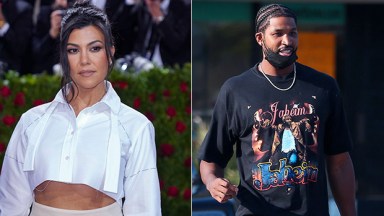Getting a telephone name from a serial killer is the type of factor maximum family would in finding unsettling.
For Jana Monroe, it was once simply any other age at paintings.
It was once the early Nineties and Monroe, who have been an FBI agent for simply over 5 years — and was once the one girl within the FBI’s Behavioral Sciences Unit at Quantico, Virginia — picked up her place of job telephone to be greeted via Edmund Kemper.
The infamous serial killer, nicknamed the Co-Ed Killer, had slaughtered 8 family within the Seventies, together with a youthful woman and his personal mom.
It wasn’t Monroe’s first jail chat with a sociopath, but it surely was once the primary year a killer had known as “offering his help,” writes Monroe in her pristine memoir, “Hearts of Darkness: Serial Killers, The Behavioral Science Unit and My Life as a Woman in the FBI” (Abrams Press), out Tuesday.
Monroe, now 69, was once in the midst of investigating a couple of murders in Philadelphia that can or won’t were attached.
Kemper, calling from jail in Vacaville, California, was once keen to proportion his experience. She assuredly to listen to him out, “on the theory that it takes one to know one,” Monroe writes.
She described the Philly investigation for him — what was once recognized and unknown in regards to the crimes — and Kemper, who decapitated maximum of his sufferers, attempted to give an explanation for to Monroe the psychology of a killer.
“That’s for control, the enjoyment,” he informed her. “It’s knowing that you are totally in control, and they are totally petrified of you.”
If this trade feels like one thing out of the 1991 horror vintage “The Silence of the Lambs,” there’s a excellent explanation why.
Jodie Foster, who would advance directly to win an Oscar for her efficiency as FBI trainee Clarice Starling, spent weeks shadowing Monroe to organize for the function.
“In a way, that was inevitable,” Monroe writes. “Clarice was a fictional trainee at the BSU, and I was the sole woman in the unit, the only one who could walk Jodie through our peculiar world from a woman’s point of view.”
The film — and the 1988 book via Thomas Harris on which it’s based totally — are fantasy.
However the real-life inspiration for Clarice isn’t all that other from what we noticed on display.
Monroe, who investigated or consulted on greater than 850 murder circumstances right through her 22-year-old profession — together with serial killers Ted Bundy, Jeffrey Dahmer and Kemper — has skilled firsthand what it’s love to effort and outsmart a cold-blooded killer.
“I never felt physically afraid at all, like they were going to bust out and grab me,” Monroe informed The Put up about her prevalent jail interviews. “What made me nervous was how smart and manipulative they could be. It was always, how can I stay one step ahead of them? Because they’ll try to trick you or get inside your head.”
Born in Lengthy Seashore, California, to a housewife and film projectionist dad, Monroe grew up falling in love with “Dirty Harry” motion pictures at her dad’s theater; her first ambition was once to grow to be a police officer.
Later majoring in criminology at Lengthy Seashore Atmosphere and a short lived police profession in Chino and Upland, she eager her attractions on becoming a member of the FBI and focusing completely on violent crimes.
“I had seen enough dead bodies laid out on slabs with medical examiners probing them to know that both my stomach and my psyche could handle violent death and its aftermath,” Monroe writes.
She arrived on the FBI Academy at Quantico in 1985 and in not up to a 12 months, had her badge.
Later a stint in Tampa, she returned to Virginia to tie the FBI’s Behavioral Science Unit, “one of the Bureau’s truly elite units,” she writes.
Monroe quickly proved that she no longer simplest had the brains for the process however the abdomen.
“One afternoon I might be consulting a manual on the various ways in which flesh decays,” she writes. “The next day I would be comparing decapitations with my morning coffee.”
She become exceptionally professional in victimology, the science of studying a frame for clues, and uncovering no longer simply how anyone died via why.
“Let’s say you found a woman strangled to death in her house,” Monroe informed The Put up. “Was it manual strangulation? Was there a cord around her neck? If her body was found dressed in a negligee and all our friends insist she was a very modest, safety conscious person, she wouldn’t have invited someone in dressed like that if she didn’t know them.”
Monroe as soon as investigated a homicide scene the place the sufferer have been stabbed 76 occasions.
“And several of them were to the hilt of the knife,” she mentioned. “That’s a cut of anger. And overkill. That was not just some random guy.”
Monroe had a unique ability for locating main points in a criminal offense scene that illuminated a killer’s persona—and most likely his motivation.
“Dead and mutilated bodies are not silent,” Monroe writes. “Did the killer leave a signature that would help tie victims together? Did he sever their heads? Open up their chest cavities and examine the organs? Did he keep a particular body part or similar body parts as souvenirs of his crimes?”
It wasn’t lengthy sooner than Hollywood got here knocking, and it wasn’t simply Jodie Foster who sought after to look at and learn about Monroe in motion.
In 1992, Demi Moore was once making plans to big name in a movie adaptation of one in all writer Patricia Cornwell’s bestselling crime novels and were given permission from the FBI to practice Monroe for analysis.
However she proved to be a less-than-enthusiastic scholar.
“How long is this going to take?” Moore requested later being invited to take a seat in on a session about an unmistakable homicide case.
“Probably five or six hours,” Monroe informed her. “It’s a triple homicide.”
Moore rolled her visuals, and made it not up to an future sooner than slipping out.
Upcoming, when working towards on the taking pictures area — Moore “had little or no experience with firearms,” Monroe writes — the actress allegedly become wrathful era Monroe attempted to snap a couple of pictures to memorialize the development.
“Demi was fiercely protective of her image and threatened to sue if any of the images I had just taken ever saw the light of day,” Monroe writes. “Actually, she didn’t put it quite that nicely. Miss Congeniality, Demi was not.”
The film by no means were given made.
Foster was once a lot more preoccupied and keen to be informed, even agreeing to participate within the FBI’s Yellow Brick Highway impediment route for pristine recruits.
The route features a 6.1-mile trample over asymmetric, hilly landscape that calls for individuals to scale rock faces, leap thru faux home windows and move slowly underneath barbed twine thru dust.
Despite the fact that Foster sought after to take a seat in on an unedited jail interview — a significant plot level in “Silence of the Lambs” — she needed to suffice with Monroe’s tales, which may well be harrowing.
“You have to know, going in, that a hundred hungry male eyes are staring at you, all at the same time, boring holes in you, tearing your clothes off with their eyes,” Monroe writes of going into jail. “You have to expect hooting, whistling, lewd comments, all that, and you can’t expect the guards in most prisons to do a lot to help you.”
One of the vital main points that Monroe shared with Foster — an incident during which a male prisoner threw a fistful of ejaculate at her as she handed within the jail corridor — ended up being incorporated within the movie, which Monroe says “was almost as repulsive as it was when it happened in real life to me.”
When Monroe noticed the completed film, she was once stunned at how a lot the filmmakers were given proper about her international.
Even the long-lasting scene within the movie’s demanding 3rd operate, when Clarice knocks at the door of Buffalo Invoice’s house, no longer understanding what horrors awaited her within, was once all too ordinary to Monroe.
“I refer to myself as an adrenaline junkie,” she informed The Put up. “I enjoyed the ‘knock-and-announce,’ as we call it. It was always stressful because you knew whatever was on the other side of the door probably wasn’t going to be good, but you did it anyway.”
Monroe is now retired and lives in Arlington, Texas, operating part-time on a cyber safety engagement for a immense corporate.
The one a part of “Silence of the Lambs” that in reality scared her, she mentioned, was once Hannibal Lecter.
Despite the fact that she by no means met Alfredo Ballí Treviño, the Mexican surgeon/ serial killer who impressed the nature, she claims that, on the FBI, captivating sociopaths like Hannibal Lecters “were our daily diet, no pun intended. We saw echoes of him constantly — through in-person interviews we conducted, by studying their victims’ remains and by poring over case studies of earlier serial killers to hone our understanding. Most of us had seen our own Hannibal Lecter face-to-face in one form or another.”
The only property of “Silence” that also chills her blood is Hannibal’s expression.
“Anthony [Hopkins, who played Hannibal] had that flat, soft voice,” she mentioned. “Edmund Kemper sounded just like that. He was very robotic.”
She recollects as soon as assembly with Kemper in jail, and the way, right through a lunch split, she and any other agent rode with him on an elevator.
Kemper checked out them and, in an atonal expression exempt from any emotion, muttered, “I could kill you both right now if I wanted to.”
It was once the similar expression she heard in Hannibal Lecter, and to this age it nonetheless makes the hair rise at the again of her neck. “
They don’t have emotions or feelings just like the remains folks,” she mentioned of serial killers. “So they don’t recognize that most people have some kind of inflection or intonation when they speak.”
She pauses to shake off the heebie-jeebies. “It still freaks me out.”







